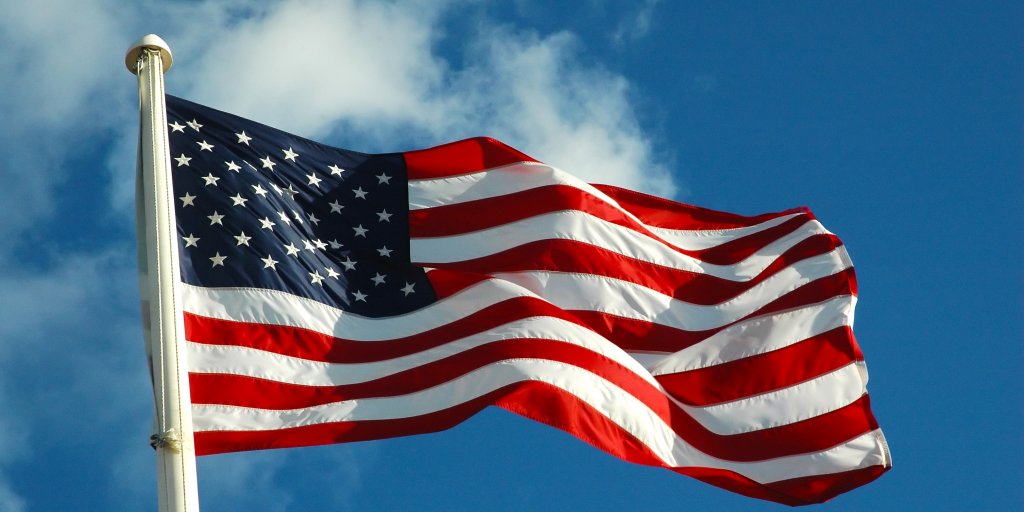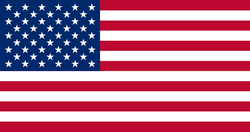Categories
Other Pages
- Age on other Planets
- Aliens
- American Flag
- Annuals
- Avoiding Scams
- Awareness Ribbons
- Baileys Liqueur
- Bananas
- Banana Tree, Grand Nain
- Banana Tree, Ice Cream
- Banana Tree, Zebrina Rojo
- Beekeeping
- Bleach
- Boogaloo
- Bookmarks
- Bullying
- Cats
- Chillicothe Businesses
- Christmas Tree
- Ciroc Vodka
- Coffee Pods
- Color Codes Chart
- Consumer Resources
- Consumer Resources - Elders
- Credit Score Checkers
- Credit Scores
- Death Checklist
- Disaronno Amaretto
- Donation
- Drug Test
- Eye Teasers
- Fonts
- Foods To Regrow
- Friend
- Funny Things
- Fun Stuff
- Giving
- Growing Blueberries
- Halloween
- Halloween Treats
- Hello!!
- Home Bar
- House Plants
- Hunger Facts
- Interesting Facts
- Kinds of Tea
- Lucky Bamboo
- Macaroni!!
- Missouri
- Missouri Prisons
- National Foundations
- Never Forget
- New Page Soon
- One Little Rose
- Orchid Growing
- Orchid Sources
- PayPal.Me
- Perennials
- Phobias A-Z
- Plant Care
- Plant Zone Map
- Propagating Plants
- Ragtime Music
- Recipes I like
- Roses
- Sadie & Beethoven
- Scam Calls
- Smile
- Speed Test
- Spices You Need
- Spices I Have
- State Trees
- Superstitions
- Symbols
- Tequila Rose
- The Ten Commandments
- Top Alcohol
- Top Animated Movies
- Top Comedy Movies
- Top Expensive Movies
- Toyota Yaris 2008
- Toyota Yaris 2012
- Tree, Calamondin Orange
- Tree, Meyer Lemon
- Tree, Persian Lime
- US Bill of Rights
- US Constitution
- US Declaration of Independence
- UV Vodka
- Weight on other Planets
- Wine Clubs
- Wines
- Wines - Missouri
Needed to read PDF's
United States Flag

The flag of the United States of America, often referred to as the American flag or the U.S. flag, is the national flag of the United States. It consists of thirteen equal horizontal stripes of red (top and bottom) alternating with white, with a blue rectangle in the canton (referred to specifically as the "union") bearing fifty small, white, five-pointed stars arranged in nine offset horizontal rows, where rows of six stars (top and bottom) alternate with rows of five stars. The 50 stars on the flag represent the 50 states of the United States of America, and the 13 stripes represent the thirteen British colonies that declared independence from the Kingdom of Great Britain, and became the first states in the U.S. Each color on the flag has a meaning: "Old Glory Red" (valor and bravery), White (purity and innocence), "Old Glory Blue" (vigilance, perseverance, and justice)
Nicknames for the flag include the Stars and Stripes, Old Glory, and the Star-Spangled Banner.
The current design of the U.S. flag is its 27th; the design of the flag has been modified officially 26 times since 1777. The 48-star flag was in effect for 47 years until the 49-star version became official on July 4, 1959. The 50-star flag was ordered by then president Eisenhower on August 21, 1959, and was adopted in July 1960. It is the longest-used version of the U.S. flag and has been in use for over 60 years.
The American flag and other national symbols
Get the facts about the U.S. flag and when to fly it at half staff. Learn about other national symbols.
History of the American flag
The flag of the United States is a symbol of freedom before which Americans recite the pledge of allegiance.
“I pledge allegiance to the Flag of the United States of America, and to the Republic for which it stands, one Nation under God, indivisible, with liberty and justice for all.”
The flag's 13 red and white stripes represent the 13 original colonies. Its 50 white stars on a blue background represent the 50 states.
Each of the colors on the flag has a meaning:
- Red: valor and bravery
- White: purity and innocence
- Blue: vigilance, perseverance, and justice
A star is added to the flag when a new state joins the United States. The flag was last modified on July 4, 1960, when Hawaii was incorporated as a state.
When to fly the flag at half-staff
The American flag flies at half-staff or at half-mast when the country or a state is in mourning. The president, a state governor, or the mayor of the District of Columbia can order flags to fly at half-staff.
In most cases, an American flag flying at half-staff marks one of three observances:
- The death of a government official, military member, or emergency first responder
- A national tragedy
- Memorial Day or another national day of remembrance
The Great Seal
The Great Seal of the United States is a national symbol used in official documents such as treaties and commissions. The final design was approved in 1782 and includes a bald eagle, an olive branch, arrows, a flag-like shield, the motto E Pluribus Unum (which translates to "out of many, one") and a constellation of stars.
The bald eagle
The bald eagle was designated as the national emblem by the U.S. Congress in 1782. Since then, it can be found on official documents, the presidential flag, the Great Seal, military insignia, and coins and bills.
United States Flag Code
The United States Flag Code establishes advisory rules for display and care of the national flag of the United States of America. It is Chapter 1 of Title 4 of the United States Code (4 U.S.C. § 1 et seq). This is a U.S. federal law, but only suggests voluntary customs for handling of the American flag and was never intended to be enforceable. The code uses non-binding language like "should" and "custom" throughout and does not prescribe any penalties for failure to follow the guidelines.
Separately, Congress passed the Flag Protection Act of 1968 (amended in 1989) (18 U.S.C. § 700), a since struck-down criminal statute, which prohibits mutilating, defacing, defiling or burning the flag. Although it remains part of codified federal law, it is not enforceable due to the Supreme Court of the United States finding it unconstitutional in United States v. Eichman.
Flag Etiquette
- The flag should never be dipped to any person or thing, unless it is the ensign responding to a salute from a ship of a foreign nation. This is sometimes misreported as a tradition that comes from the 1908 Summer Olympics in London, where countries were asked to dip their flag to King Edward VII; American team flag bearer Ralph Rose did not follow this protocol, and teammate Martin Sheridan is often, though apocryphally, quoted as proclaiming that "this flag dips before no earthly king."
- When a flag is so tattered that it no longer fits to serve as a symbol of the United States, it should be replaced in a dignified manner. The Veterans of Foreign Wars, American Legion, Boy Scouts of America, Girl Scouts of the USA, TrailLife USA, the military and other organizations regularly conduct dignified flag retirement ceremonies.
- The flag should never be used as a receptacle for receiving, holding, carrying, or delivering anything.
- The flag should never touch anything physically beneath it.
- The flag should never be used as wearing apparel, bedding or drapery. It should never be festooned, drawn back, nor up, in folds but always allowed to fall free.
- The flag should always be permitted to fall freely. (An exception was made during the Apollo moon landings when the flag hung from a vertical pole designed with an extensible horizontal bar, allowing full display even in the absence of an atmosphere.)
- The flag should never be carried flat or horizontally.
- The flag should never be used for advertising purposes in any manner whatsoever.
- The flag should never be upside down, except to signal distress or great danger.
- When displayed vertically against a wall, the union should be to the observer’s left.
Folding the Flag

Flag Day
(United States)
Observed by United States
Date: June 14
Frequency: Annually
United States, Flag Day is celebrated on June 14. It commemorates the adoption of the flag of the United States on June 14, 1777, by resolution of the Second Continental Congress. The Flag Resolution, passed on June 14, 1777, stated: "Resolved, That the flag of the thirteen United States be thirteen stripes, alternate red and white; that the union be thirteen stars, white in a blue field, representing a new constellation."
The United States Army also celebrates the U.S. Army birthday on this date; Congress adopted "the American continental army" after reaching a consensus position in the Committee of the Whole on June 14, 1775.
In 1916, President Woodrow Wilson issued a proclamation that officially established June 14 as Flag Day; on August 3, 1949, National Flag Day was established by an Act of Congress. Flag Day is not an official federal holiday. Title 36 of the United States Code, Subtitle I, Part A, CHAPTER 1, § 110 is the official statute on Flag Day; however, it is at the president's discretion to officially proclaim the observance. On June 14, 1937, Pennsylvania became the first U.S. state to celebrate Flag Day as a state holiday, beginning in the town of Rennerdale. New York Statutes designate the second Sunday in June as Flag Day, a state holiday.
Perhaps the oldest continuing Flag Day parade is in Fairfield, Washington. Beginning in 1909 or 1910, Fairfield has held a parade every year since, with the possible exception of 1918, and celebrated the "Centennial" parade in 2010, along with some other commemorative events. Appleton, Wisconsin, claims to be the oldest National Flag Day parade in the nation, held annually since 1950.
Quincy, Massachusetts, has had an annual Flag Day parade since 1952 and claims it "is the longest-running parade of its kind" in the U.S. The largest Flag Day parade had been held annually in Troy, New York until 2017, which based its parade on the Quincy parade and typically draws 50,000 spectators. In addition, the Three Oaks, Michigan, Flag Day Parade is held annually on the weekend of Flag Day and is a three-day event and they claim to have the largest flag day parade in the nation as well as the oldest. In Washington, D.C., Flag Day is celebrated heavily through the 7th and 8th Wards of the city. It is said that Clyde Thompson is the "Godfather of Flag Day". It is tradition in these wards to slow-smoke various meats and vegetables.
The Stars
NUMBER OF STARS IN THE U.S. FLAG, AND ADDITIONAL STATES REPRESENTED
1777 TO PRESENT
| Date of Flag | Date of entry into Union |
|
13 stars - 1777 to 1795 |
Delaware (December 7, 1787) Pennsylvania (December 12, 1787) New Jersey (December 18, 1787) Georgia (January 2, 1788) Connecticut (January 9, 1788) Massachusetts (February 6, 1788) Maryland (April 28, 1788) South Carolina (May 23, 1788) New Hampshire (June 21, 1788) Virginia (June 25, 1788) New York (July 26, 1788) North Carolina (November 21, 1789) Rhode Island (May 29, 1790) |
|
15 stars - 1795 to 1818 |
Vermont (March 4, 1791) Kentucky (June 1, 1792) |
|
20 stars - 1818 to July 3, 1819 |
Tennessee (June 1, 1796) Ohio (March 1, 1803) Louisiana (April 30, 1812) Indiana (December 11, 1816) Mississippi (December 10, 1817) |
|
21 stars - July 4, 1819 to July 3, 1820 |
Illinois (December 3, 1818) |
|
23 stars - July 4, 1820 to July 3, 1822 |
Alabama (December 14, 1819) Maine (March 15, 1820) |
|
24 stars - July 4, 1822 to July 3, 1836 |
Missouri (August 10, 1821) |
|
25 stars - July 4, 1836 to July 3, 1837 |
Arkansas (June 15, 1836) |
|
26 stars - July 4, 1837 to July 3, 1845 |
Michigan (Jan 26, 1837) |
|
27 stars - July 4, 1845 to July 3, 1846 |
Florida (March 3, 1845) |
|
28 stars - July 4, 1846 to July 3, 1847 |
Texas (December 29, 1845) |
|
29 stars - July 4, 1847 to July 3, 1848 |
Iowa (December 28, 1846) |
|
30 stars - July 4, 1848 to July 3, 1851 |
Wisconsin (May 29, 1848) |
|
31 stars - July 4, 1851 to July 3, 1858 |
California (September 9, 1850) |
|
32 stars - July 4, 1858 to July 3, 1859 |
Minnesota (May 11, 1858) |
|
33 stars - July 4, 1859 to July 3, 1861 |
Oregon (February 14, 1859) |
|
34 stars - July 4, 1861 to July 3, 1863 |
Kansas (January 29, 1861) |
|
35 stars - July 4, 1863 to July 3, 1865 |
West Virginia (June 20, 1863) |
|
36 stars - July 4, 1865 to July 3, 1867 |
Nevada (October 31, 1864) |
|
37 stars - July 4, 1867 to July 3, 1877 |
Nebraska (March 1, 1867) |
|
38 stars - July 4, 1877 to July 3, 1890 |
Colorado (August 1, 1876) |
|
43 stars - July 4, 1890 to July 3, 1891 |
North Dakota (November 2, 1889) South Dakota (November 2, 1889) Montana (November 8, 1889) Washington (November 11, 1889) Idaho (July 3, 1890) |
|
44 stars - July 4, 1891 to July 3, 1896 |
Wyoming (July 10, 1890) |
|
45 stars - July 4, 1896 to July 3, 1908 |
Utah (January 4, 1896) |
|
46 stars - July 4, 1908 to July 3, 1912 |
Oklahoma (November 16, 1907) |
|
48 stars - July 4, 1912 to July 3, 1959 |
New Mexico (January 6, 1912) Arizona (February 14, 1912) |
|
49 stars - July 4, 1959 to July 3, 1960 |
Alaska (January 3, 1959) |
|
50 stars - July 4, 1960 to present |
Hawaii (August 21, 1959) |
Find me on Social Media
 |
Don't forget to bookmark me to see updates.. Copyright © 2000 - 2025 - K. Kerr Most recent revision November 19, 2025 07:05:28 AM
|











